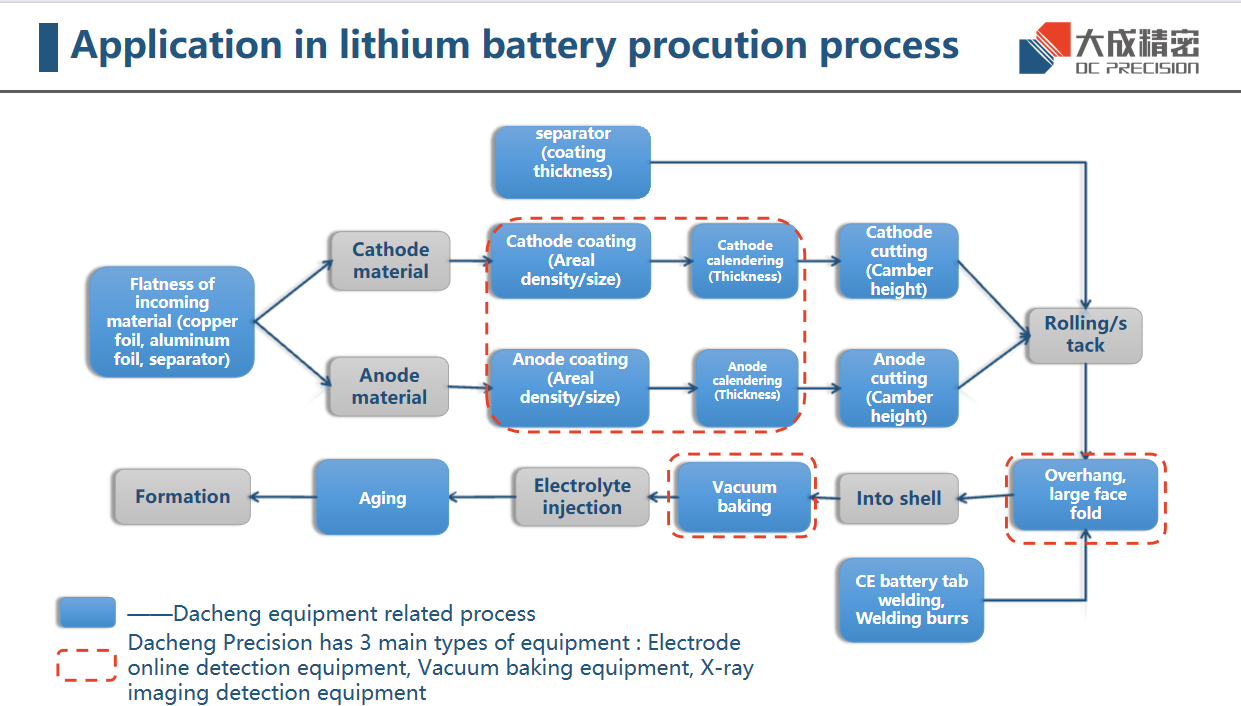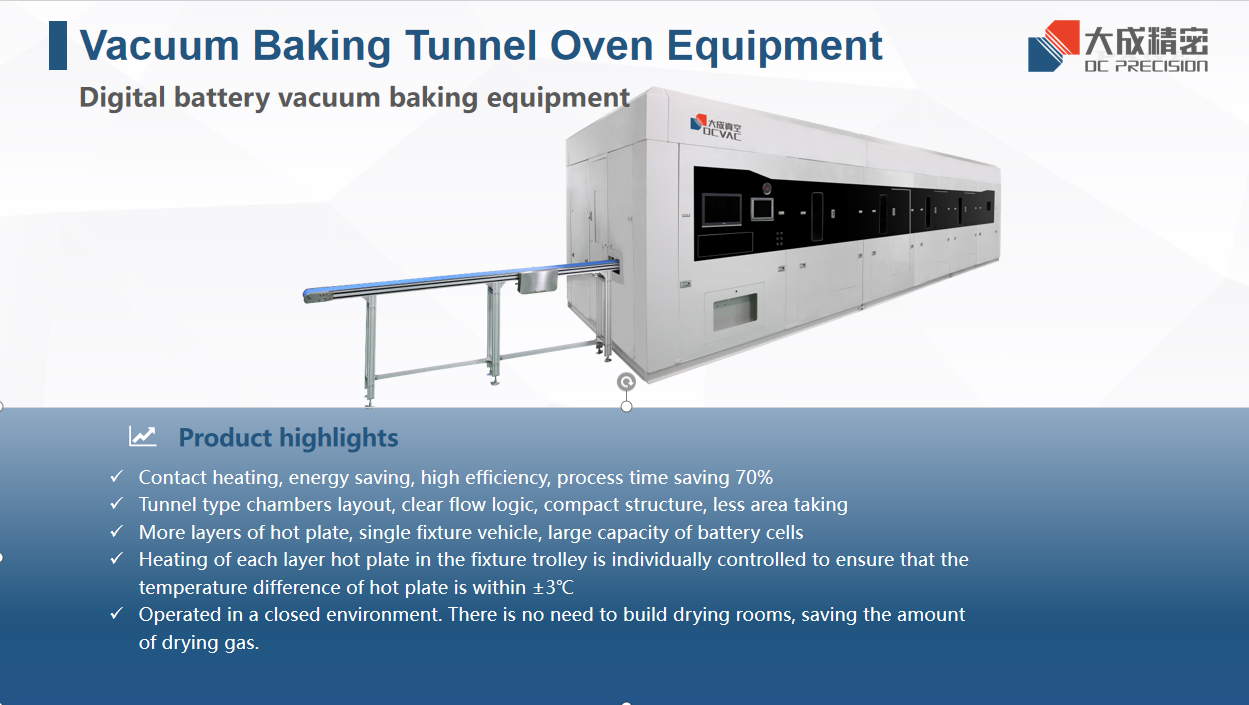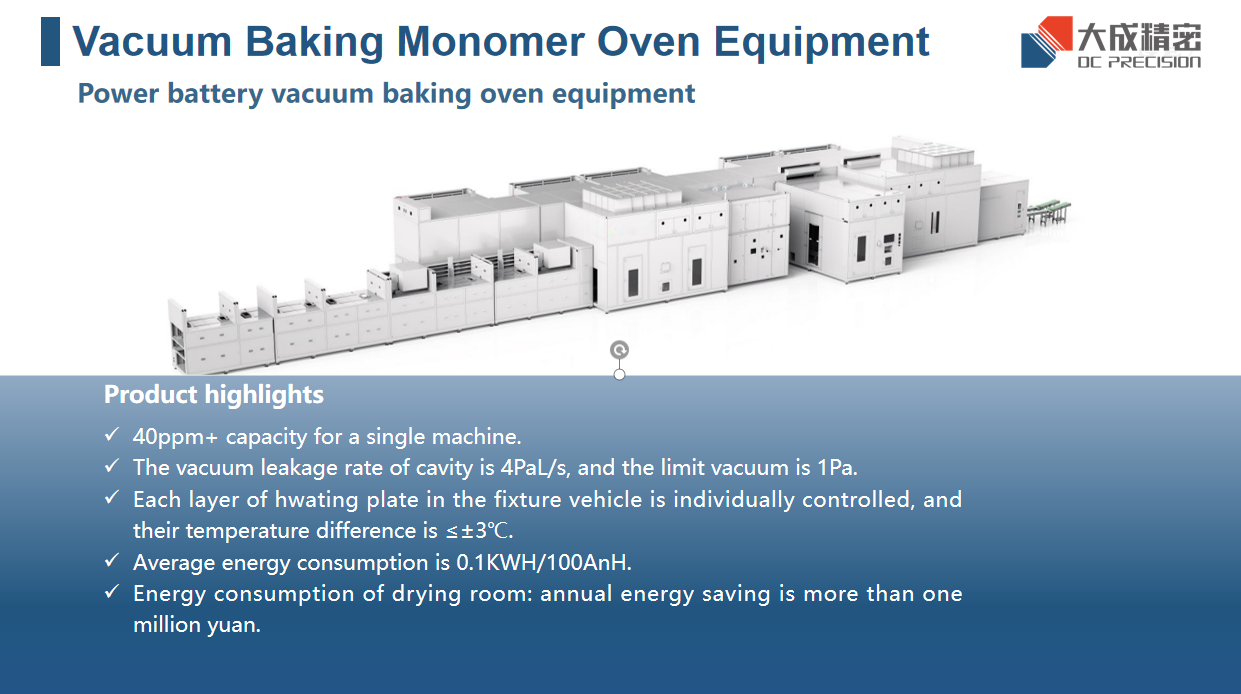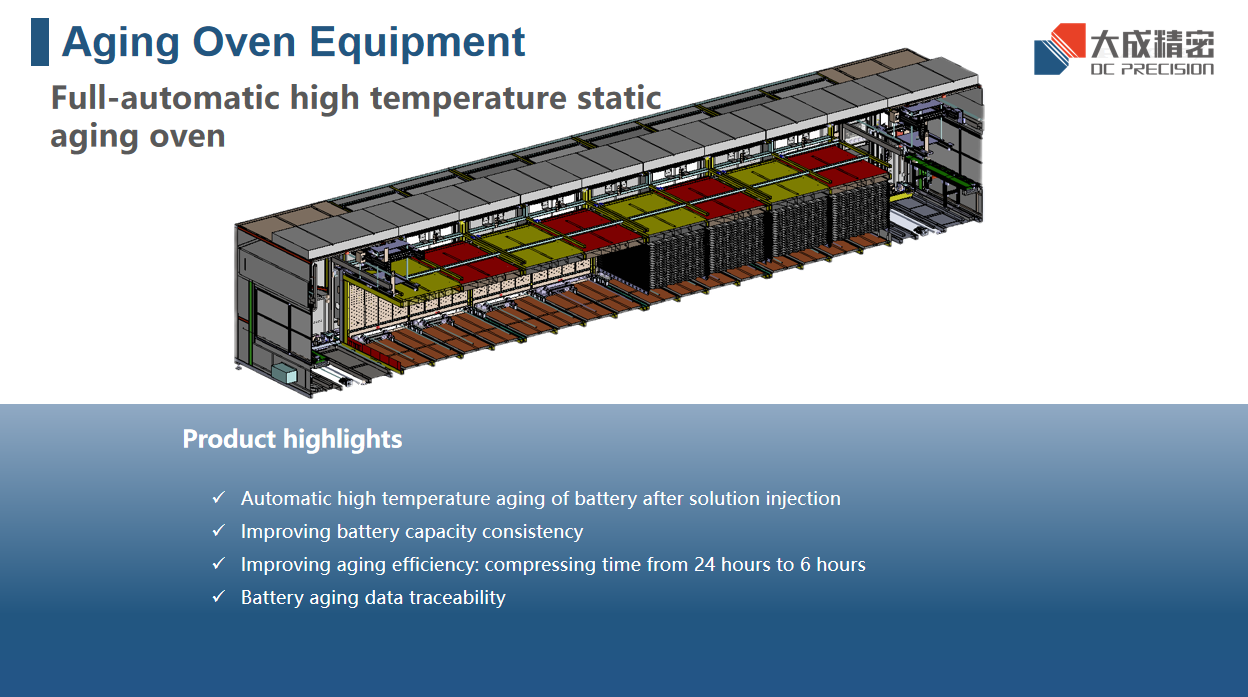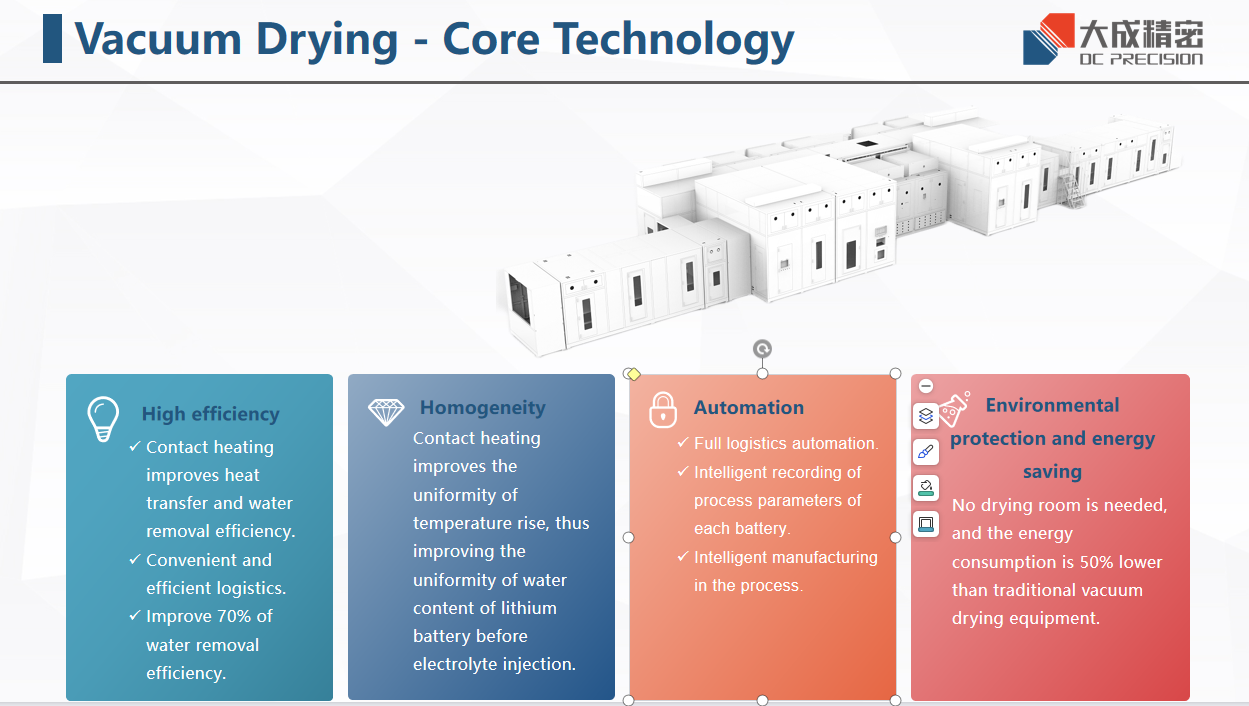Previously, we introduced the front-end and middle-stage process of lithium battery manufacturing in detail. This article will continue to introduce the back-end process.
The production goal of back-end process is to complete the formation and packaging of lithium-ion battery. In the middle-stage process, the functional structure of cell has been formed, and these cells need to be activated in the later process. The main process in the later stages include: into shell, vacuum baking (vacuum drying), electrolyte injection, aging, and formation.
Into shell
It refers to packaging the finished cell into an aluminum shell to facilitate the addition of electrolyte and protect cell structure.
Vacuum baking (vacuum drying)
As is known to all, water is fatal to lithium batteries. This is because when water comes into contact with electrolyte, the hydrofluoric acid will be formed, which can cause great damage to battery, and the gas generated will cause the battery to bulge. Therefore, the water inside the lithium-ion battery cell needs to be removed in the assembly workshop before electrolyte injection to avoid affecting the quality of lithium-ion battery.
Vacuum baking includes nitrogen filling, vacuuming, and high-temperature heating. Nitrogen filling is to replace the air and break the vacuum (long-term negative pressure will damage the equipment and battery. Nitrogen filling makes the internal and external air pressure roughly equal) to improve thermal conductivity and allow water to evaporate better. After this process, the moisture of lithium-ion battery is tested, and the next process can only be continued after these cells pass the test.
Electrolyte injection
Injection refers to the process of injecting the electrolyte into the battery in accordance with the required amount through reserved injection hole. It is divided into primary injection and secondary injection.
Aging
Aging refers to the placement after the first charge and formation, which can be divided into normal temperature aging and high temperature aging. The process is performed to make the properties and composition of the SEI film formed after the initial charge and formation more stable, ensuring the electrochemical stability of battery.
Formation
The battery is activated through the first charge. During the process, an effective passive film (SEI film) is formed on the surface of negative electrode to achieve the “initialization” of lithium battery.
Grading
Grading, that is, “capacity analysis”, is to charge and discharge the cells after formation according to the design standards to test the electric capacity of the cells and then they are graded according to their capacity.
In the entire back-end process, vacuum baking is the most important. Water is the “natural enemy” of lithium-ion battery and is directly related to their quality. The development of vacuum drying technology has effectively solved this problem.
Dacheng precision vacuum drying product series
Vacuum drying products line of Dacheng precision has three major product series: vacuum baking tunnel oven, vacuum baking monomer oven, and aging oven. They have been used by top lithium battery manufacturers in the industry, receiving high praise and positive feedback.
Dacheng Precision has a group of professional R&D personnel with high technical level, great innovation ability and rich experience. In terms of vacuum drying technology, Dacheng Precision has developed a series of core technologies including multi-layer fixture integration technology, temperature control systems, and circulating loading vehicles dispatching systems for vacuum baking oven, with its core competitive advantages.
Post time: Sep-20-2023

